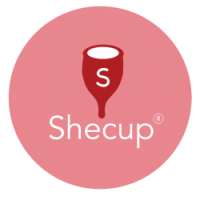Reusable Menstrual Cup: Market Driven by Real Life User Accounts of Convenience & Safety

Experience #1
I was introduced to menstrual cups by social media; was reading a lot about it, and I was motivated by the zero-waste appeal. Initially, it took some time to get used to the wearing, but after a couple of cycles, it became convenient. Shecup is way more comfortable, with zero unease and leaks, no pain and lasts much longer than pads. Don’t believe the naysayers. Try and judge for yourself. — Tanisha, 15 years, Student
Experience #2
Working long shifts in a production unit, especially on periods; the constant discomfort and wetness; felt nothing less than a punishment. That was until I started using a reusable menstrual cup. After a year of use, I can vouch it is more convenient, comfortable, economical, and hygienic. — Sukriti, 32 years, Professional
Experience #3
Hot flashes, irregular cycles, and dryness; while going through menopause I was unable to use tampons. I developed rashes and irritation. My search for an alternative led me to the organic menstrual cup. I wish I had known about this before, would have saved me years of uncomfortable periods. — Binita, 48 years, Homemaker
No false platitudes or fudged PR and marketing gimmicks! These are the real-life accounts of Shecup users representing different age groups. Whether you are a teenager who has just started menstruating, or a professional or homemaker, going through menopause; a reusable menstrual cup is convenient and safe for all.
But what does the market dynamics tell about the reception of menstrual cup?
Is Menstrual Cup Poised for Mass Consumption?
If we draw stats and numbers, there are discrepancies in data collection and projection, majorly influenced by the market monopoly of disposable pad manufacturers. Nevertheless, there is no denying that reusable menstrual cup 2026 market projection of $1.89 billion looks minimal to sanitary pads’ $30.3 billion. But there are significant reasons behind such disparity.
- Unlike disposable brands, reusable and organic menstrual cup brands cannot rely on repeat customers. Disposable sanitary pads are bought each month, while menstrual cups are a one-time long-term investment since a single cup lasts for 10 years.
- While disposable brands invest heavily in PR and marketing campaigns, not to mention, bank on the habitual use of women, the popularity and sale of reusable products rely on the customer experience and its eco-friendly appeal.
- Women are often too scared or reluctant to use a new product, especially when there is so much negative publicity regarding menstrual cups.
So, yes, from the marketing perspective it is an uphill battle for a menstrual cup brand to surpass the market monopoly of disposable sanitary pad brands. However, even with such a wide gap, the recent consumer activity shows a significant inclination towards menstrual cups.
Shecup and likewise products have successfully debunked age-old myths and taboos, raising positive questions and discussions regarding the female body; all thanks to the honest user accounts, documenting the convenience and safety surrounding the use of the organic menstrual cup. It is fair to say that despite all the marketing gimmicks and negative publicity, menstrual cups are approaching steadily towards mass consumption.





